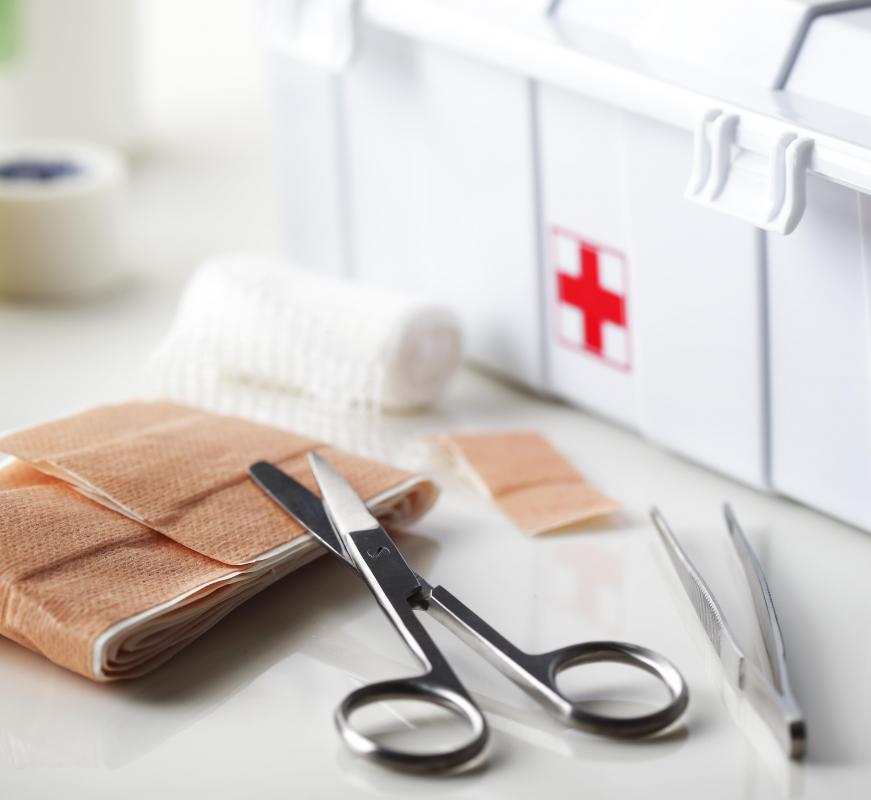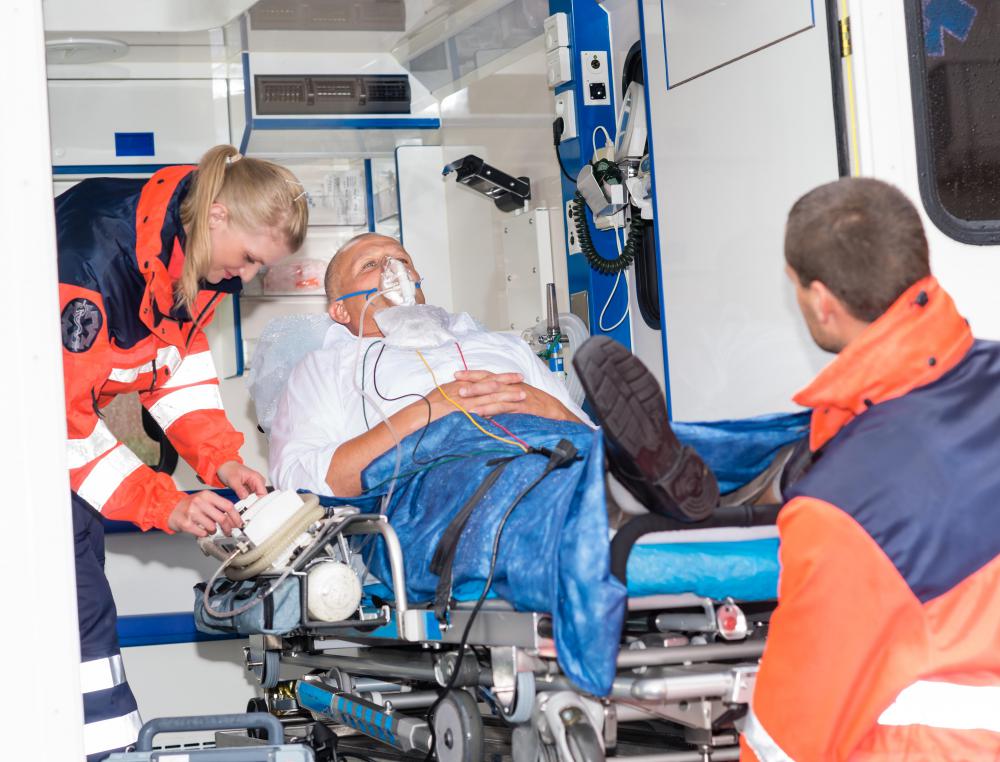At TheHealthBoard, we're committed to delivering accurate, trustworthy information. Our expert-authored content is rigorously fact-checked and sourced from credible authorities. Discover how we uphold the highest standards in providing you with reliable knowledge.
What are Mosquito Forceps?
Mosquito forceps are one of many types of hemostatic forceps. They also are commonly known as “mosquito clamps.” The name of this category of forceps is a reference to their size; though not quite as small as a mosquito, these clamps are among the smallest types of surgical forceps in macroscopic medicine. At first glance, these tools appear to resemble small scissors, pincers or pliers. Of course, their true structure and purpose are far from those of everyday utilities.
All hemostatic forceps, including mosquito forceps, are used mainly to control bleeding and handle blood vessels during surgery. They therefore are used most often by surgeons and other medical professionals, and they also can be found in the first aid kits carried by paramedics. Mosquito forceps, in particular, are used to manage smaller, more delicate blood vessels. Although they resemble small scissors, they possess a blunt grip rather than sharp blades. The blunt grip is essential for the gentle grasping of vessels and the minimization of any unnecessary trauma to surrounding tissue.

Like most hemostatic forceps, mosquito forceps often feature a locking mechanism, which allows the tool to stay clamped to blood vessels while the surgeon performs other work with his or her free hands. The tips generally are thinner and more precise than those of average hemostatic forceps, enabling them to deal with very small tissues or vessels. The tips of these forceps can be either straight or curved, depending on the specific application of the tool. The tips also might be serrated for more efficient grasping, but because these forceps are used mainly for daintier, more delicate tissues, the edges usually are smooth.

The typical size for mosquito forceps ranges from 3 inches (approximately 7.5 cm) to 5 inches (approximately 13 cm) in length. Again, these clamps are generally much smaller than normal hemostatic forceps which, in contrast, are available in sizes up to 10.5 inches (about 26.7 cm) in length. These forceps also are commonly manufactured from either stainless steel or carbon steel, which are appropriate for use in surgical procedures because they are fairly durable and can withstand repeated sterilization and reuse. An alternative to using these steel tools is the use of disposable plastic forceps, which often are intended for one use only and afterward can be thrown away. The plastic would not be able to withstand the high temperatures of medical sterilization procedures and would be unsafe to use more than once.
AS FEATURED ON:
AS FEATURED ON:














Discussion Comments
Hemostat clamps are actually pretty useful to have around the house. I had a friend who would use an old pair when she was sewing, to keep the fabric in place. I'm not sure if they were mosquito hemostatic forceps but they weren't much bigger than a pair of tweezers so maybe they were.
I bought a beautiful dissection kit when I started a biology class at university and it had a pair of forceps in it.
I never got a chance to use them though as we didn't need to hold anything in place. I'm hoping next year we will do some more complicated work and I'll get to try out all the different tools in my kit.
In one of my biology classes they described what they have to do in order to properly sterilize equipment like mosquito hemostat forceps and it really is quite rough on the tools.
They usually put the tools into an autoclave, which is a machine which can heat steam up to a temperature well above boiling water. They will leave equipment in there for up to an hour, although most bacteria will be killed much sooner than that.
Unfortunately diseases like CJD are caused by prions and they take a long time to be killed by hot temperatures. So, in order to guarantee that equipment is sterile they leave it in there as long as it takes.
Post your comments